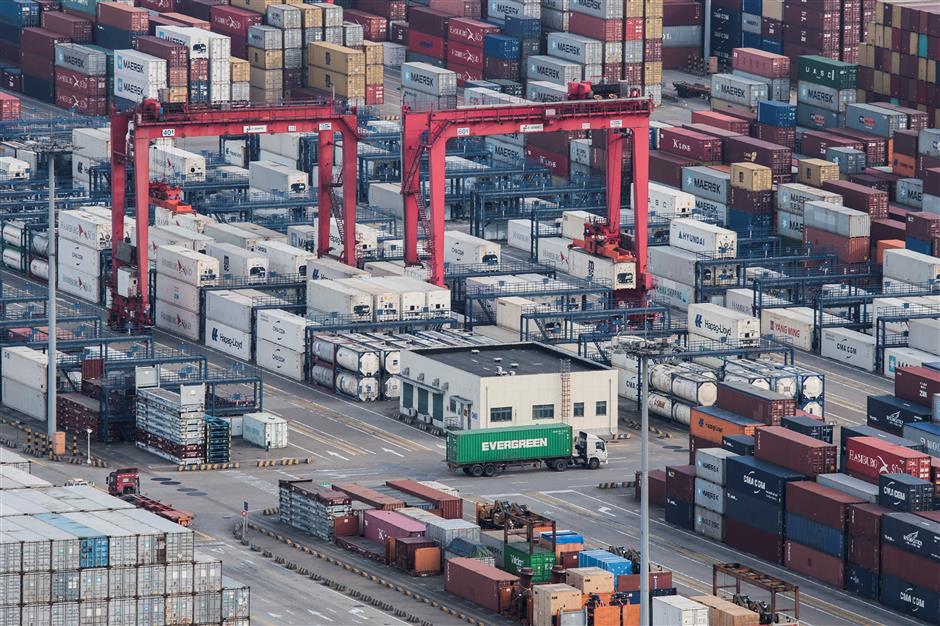China's trade surplus narrows 21.8% in Q1

A cargo truck drives amid stacked shipping containers at the Yangshan Deep-Water Port in Shanghai on March 29, 2018.
China's goods trade surplus shrank 21.8 percent in the first quarter of this year as the country saw a better balance of trade, customs data showed on Friday.
China's goods exports rose 7.4 percent year on year in the first three months while imports grew 11.7 percent, resulting in a trade surplus of 326.18 billion yuan (US$51.85 billion), according to the General Administration of Customs.
Total foreign trade volume expanded 9.4 percent to 6.75 trillion yuan in the first quarter from the same period last year.
Huang Songping, a spokesperson with the GAC, told a press briefing that the relatively fast trade growth was a result of a mild global economic recovery that has given rise to robust trading activities, as well as the sound development of the domestic economy, which has strengthened demand for imports.
Steady progress in the Belt and Road Initiative and stronger trading with emerging markets also supported the first-quarter growth, Huang said, as trade volume with Belt and Road countries jumped 12.9 percent in the three-month period, 3.5 percentage points faster than the overall increase.
Trade with countries along the Belt and Road reached 1.86 trillion yuan, accounting for 27.5 percent of China's total foreign trade in the first quarter, according to Huang.
The European Union, the United States and ASEAN were the top three trading partners of China, which together accounted for 41.2 percent of foreign trade.
From January to March, trade between China and the United States rose 13 percent in dollar-denominated terms, with Chinese exports to the United States increased 14.8 percent and the China-US trade surplus standing at 58.25 billion dollars.
Chinese private enterprises played a bigger role in trade by contributing 38.3 percent to total trade, up 1.7 percentage points compared with the first quarter of 2017.
The country's less developed regions, including central and western China, all outpaced the national average trade growth in the January-March period.
Huang said he sees rising pressure and challenges for the global economy and international trade in the second quarter stemming from global uncertainties and intensifying protectionism.
Fiercer competition in the global manufacturing sector will also pose challenges for China's foreign trade, he said.
But Huang said he expects China's foreign trade will maintain an upward trend as the country has pledged to take measures to further open up its market and expand imports.















